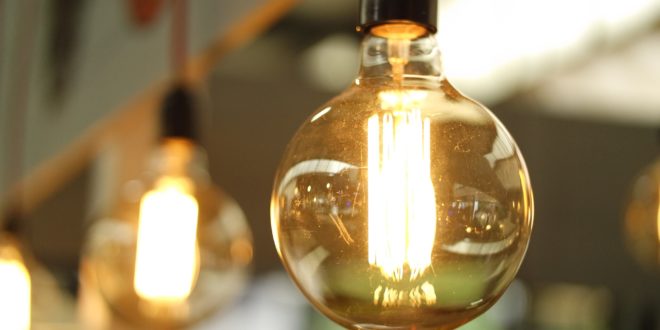Energy
production is one of the most significant greenhouse gas generators in the
world. In 2017, traditional power generation — burning coal, natural gas,
petroleum and other fossil fuels — generated 1,744 million metric tons of CO2,
roughly 34 percent of the country’s cumulative CO2 emissions. The United States
also ranks last in energy efficiency, wasting a full two-thirds of the power it
creates. On a smaller scale, what can you do to prevent energy waste in your
own home?
1. Upgrade to Energy Star Appliances
Old
appliances draw a lot of power. Upgrade your old fridge or stove to a newer
model with a higher Energy Star rating. A top
Energy Star rating means the appliance draws less electricity, and uses the
power it takes more efficiently.
2. Replace Old Light Bulbs With CFLs or LEDs
Incandescent
lightbulbs require more energy because 90 percent of the power they draw gets lost as heat. Something as
straightforward as replacing your light bulbs can reduce your home’s energy
waste dramatically.
3. Stop Standing With the Fridge Door Open
We
all do it — walk to the fridge, open the door, contemplate the contents for a
minute or two, then close it without taking anything out. Stop it. Standing
with the door open wastes upwards of 7 percent of the
power the appliance draws, and that adds up on your monthly energy bill.
4. Don’t Touch the Thermostat
Your
home’s HVAC system uses electricity to keep your house warm in the winter and
cold in the summer. Don’t make it work any harder than it has to. Keep it set
to 78 during the summer months, and 68 during the winter.
5. Adjust Your Fridge Thermostat
Your
fridge and freezer don’t have to be at their lowest setting to keep your food
cold. Set your freezer to 5 degrees Fahrenheit and your fridge to 40 degrees Fahrenheit
to save money. Remember not to set your refrigerator or freezer temperatures
too high — the danger zone for bacterial growth is between 40 and 140 degrees,
so you could give yourself food poisoning trying to prevent energy waste if
you’re not careful.
6. Beware of Standby Modes
Most
smart devices — phones, computers, televisions and even some smart appliances —
have a standby mode. It looks like they’re off, but they’re still drawing
power. Wherever possible, unplug your devices when they’re not in use to save
energy.
7. Install or Improve Your Home’s Insulation
Insulation
helps keep your home’s energy bill down by maintaining the interior
temperature, so your HVAC unit doesn’t waste energy working so hard. Most power
companies offer free in-home assessments to determine if you’ve got enough
insulation in your ceiling and walls. If the answer is no, consider an upgrade.
8. Skip the Skylights
Skylights
might seem ideal if you’re trying to reduce your reliance on artificial light
to save energy, but they’re more trouble than they’re worth. They poke holes in
your ceiling insulation, which makes it harder to maintain the interior
temperature. When it comes to heat loss during the winter, skylights are also 1.6 times worse than standard windows.
Plus, they’re prone to leaks. Skip the skylights, on all counts.
9. Upgrade Your Windows
Speaking
of windows, if yours are original to your home, it’s probably time for an
upgrade. Swapping your old windows for energy-efficient alternatives can save
you between $126 and $465 a year in
energy costs by preventing heat loss.
10. Insulate Your Hot Water Heater
Your
water heater is a steel tank, and steel dissipates heat pretty efficiently. Without
insulation, you’re wasting a lot of energy when the appliance has to reheat the
water repeatedly, regardless of how much hot water you use. Insulating the tank
means it doesn’t need to work as hard because the water doesn’t cool off as
quickly, saving energy in the long run.
Small Steps Lead to Big Changes
You
don’t have to make significant changes to reduce energy waste in your home.
Steps as simple as upgrading your appliances and replacing your light bulbs
with CFL or LED alternatives can make a significant difference.

Green Jobs
How to Apply for a Green Job With the demand for green jobs skyrocketing so far in 2017, giving yourself a unique edge can be difficult—yet absolutely necessary—in order for you to become a proud worker for Mother Earth. Follow these steps to successfully claim your next environmentally friendly employment opportunity. 1. Resume: Make sure … Continue reading..



